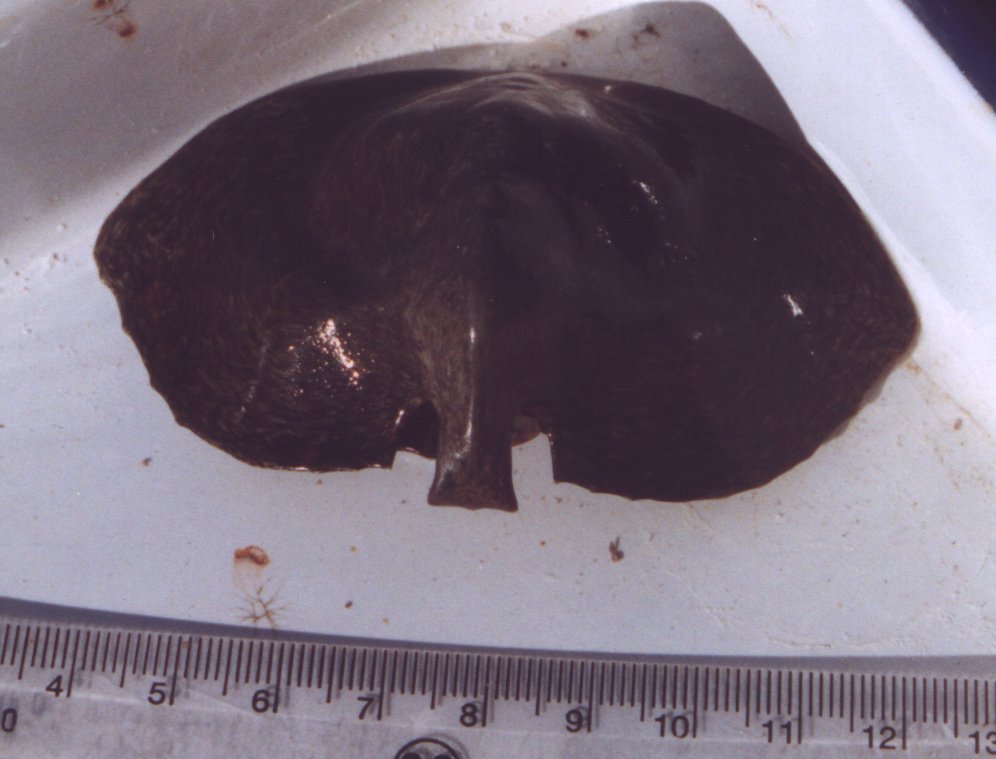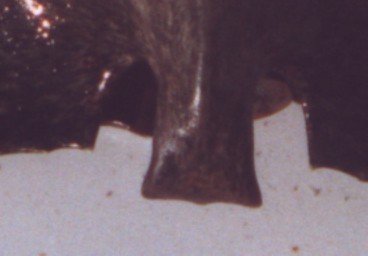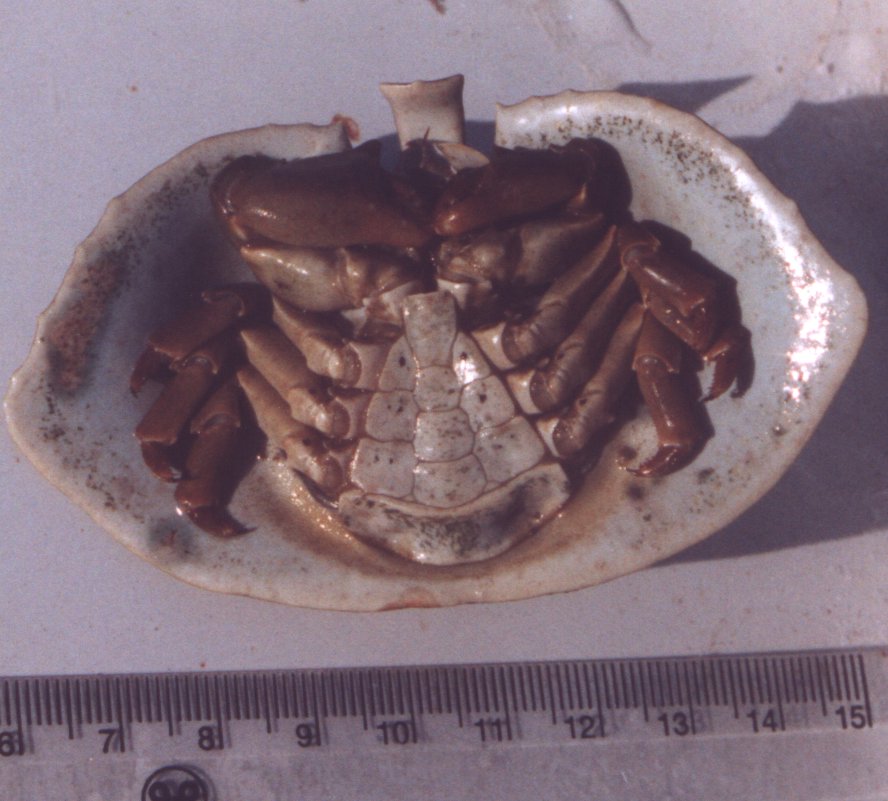Cryptolithodes sitchensis Brandt, 1853Common name(s): Umbrella crab, Turtle crab, Sitka crab |
|
| Synonyms: |  |
| Phylum Arthropoda
Subphylum Crustacea Class Malacostraca Subclass Eumalacostraca Superorder Eucarida Order Decapoda Suborder Pleocyemata Infraorder Anomura Superfamily Paguroidea Family Lithodidae |
|
| Cryptolithodes sitchensis from 15 m depth, Sares Head | |
| (Photo by: Dave Cowles, 2001) | |
How to Distinguish from Similar Species: Cryptolithodes typicus has a similar body shape but has a rostrum that is widest at the base, the propodus of its chela is rough, and the margins of its abdominal plates have raised margins.
Geographical Range: Torch Bay, Alaska to Point Loma (San Diego), CA
Depth Range: Intertidal to 15 m
Habitat: Rocky shores, usually on outer coast. Nestles under rocks or in crevices in algae-covered bedrock, low intertidal and subtidal
Biology/Natural History: This species, like Cryptolithodes typicus, is very slow moving. Feeds on upright coralline algae such as Corallina, Calliarthron, and Bossiella. Tends to be found at shallower depths than C. typicus is.
| Return to: | |||
| Main Page | Alphabetic Index | Systematic Index | Glossary |
References:
Dichotomous Keys:Coffin, 1952
Hart, 1982
Kozloff 1987, 1996
Smith and Carlton, 1975
Wicksten, 2009
General References:
Gotshall
and Laurent, 1979
Kozloff,
1993
Morris
et al., 1980
O'Clair
and O'Clair, 1993
Scientific
Articles:
General Notes and Observations: Locations, abundances, unusual behaviors:

Cryptolithodes sitchensis rostrum is widest at the tip

Cryptolithodes sitchensis underside.
Note
that the propodus
of the chela is smooth, and that the abdominal plates do not have
raised
margins. The underside of the carapace is nearly always
white.
Photo by Dave Cowles, July 2001
Authors and Editors of Page:
Dave Cowles (2005): Created original page